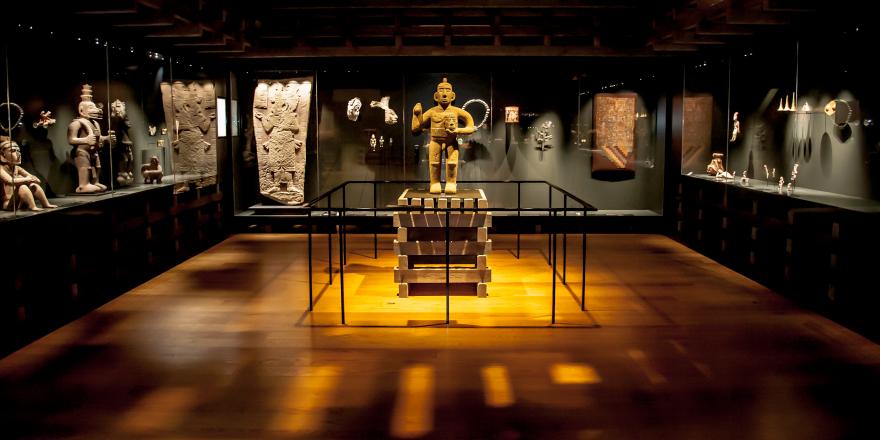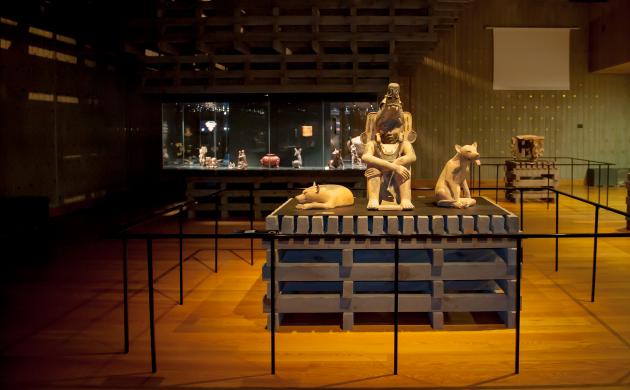“I have seen the things they brought for the king from the new golden land [Mexico]. [...]
And I haven't seen anything in my life that has pleased me as much as this. Because I have seen wonderful artifacts and was amazed at the subtle ingenuity of people in foreign countries.”
according to Albrecht Dürer in his travel diary
about his visit to the court of Charles V on August 27, 1520.
Pre-Columbian America: one concept, many cultures
The objects from the Paul and Dora Janssen-Arts collection are almost all from South America. Thanks to the diversity of climates and landscapes, the continent has many cultural regions. Mesoamerica, on the dividing line between North and South America, with its deserts, jungles and highlands, harboured cultures such as those of the Olmecs, Maya and Aztecs.
The land bridge between Mesoamerica and the Andes stretches from Nicaragua to Colombia. Residents of this area benefited from the knowledge and ideas between north and south. Finally, the Andes Mountains connect Colombia, Ecuador, Peru, Bolivia, Chile and Argentina. The immense mountain peaks separate the jungle in the east from the dry coastal area in the west. Here, the Incas built a gigantic empire.
Columbus' arrival in America in 1492 represents a break in the history of the continent. European conquistadores rapidly wiped out local cultures. Yet, ancient traditions and beliefs still live on in Christian South America.
The Janssen-Arts collection is one of the most important collections of pre-Columbian art in Europe. Dora Janssen was initially captivated by the splendor of the South American gold. Once struck by the context of the objects, she focused on the Maya and attended classes at the University of Texas at Austin, a major center for Mayan studies. The approximately four hundred objects show a beautiful overview of the many pre-Columbian traditions.
A selection:
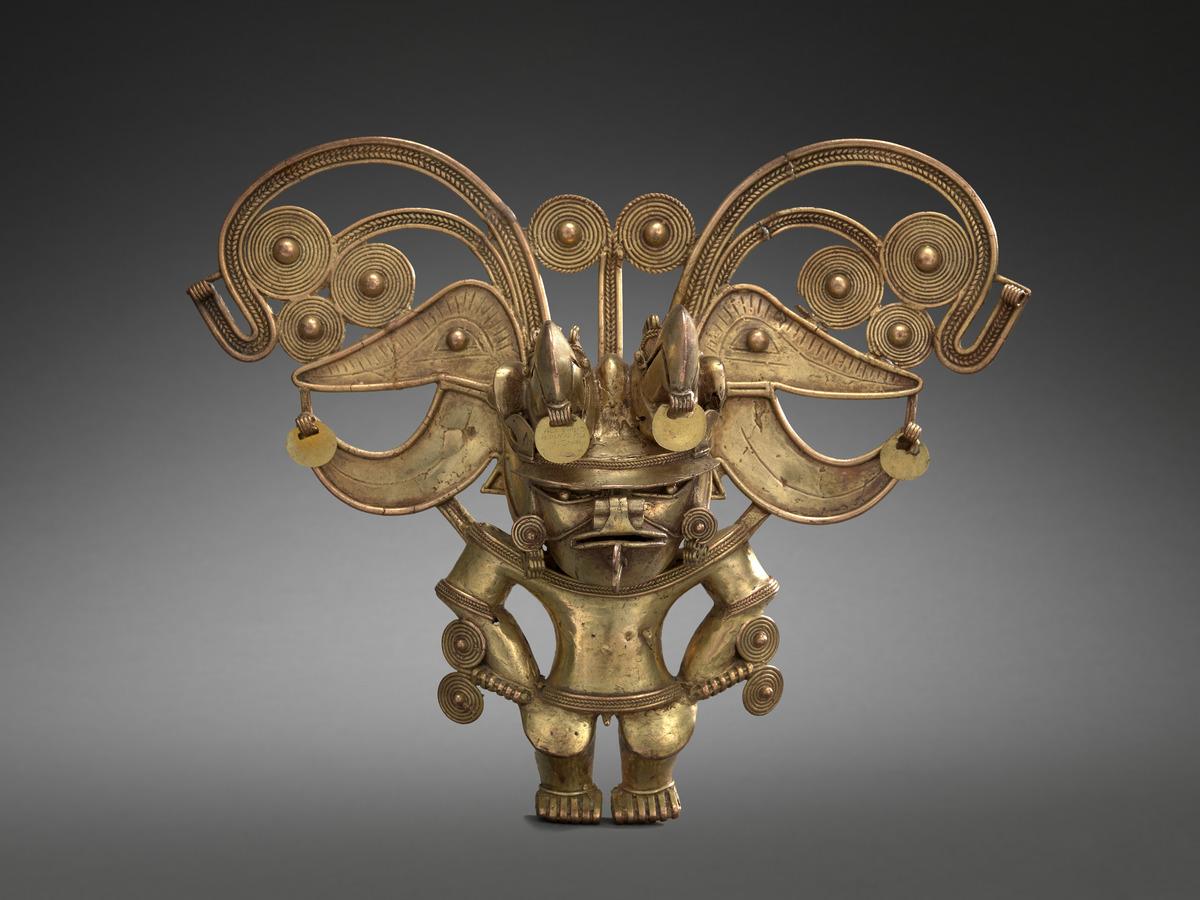

Pendant in the form of a leader or shaman
Tairona culture, northern Colombia, 500-1600.
Gold (tumbaga), inv. no. MAS.IB.2010.017.169.
The man wears ear jewelry, a headdress, nose ring, lip plug, and a face mask. The Metropolitan Museum of Arts in New York has a similar piece in its collection. Tumbaga is a gold/copper alloy and has a lower melting point, making it easier to work with. This pectoral is one of Dora Janssen's favorites.
Mortar (?) in the form of a cat
Transition Valdivia to Chorrera culture, north coast of Ecuador, 1500-600 BC.
Green stone, inv.no. MAS.IB.2010.017.252
The highly stylized cat may have served as a mortar to grind hallucinogens that the shaman used to enter a trance. The shape inspired Carl Barks for his "square chickens and figures" in the comic strip Donald Duck in the Andes (1949).
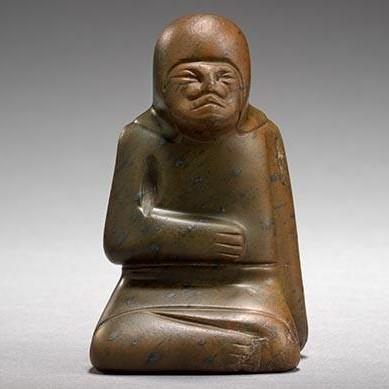
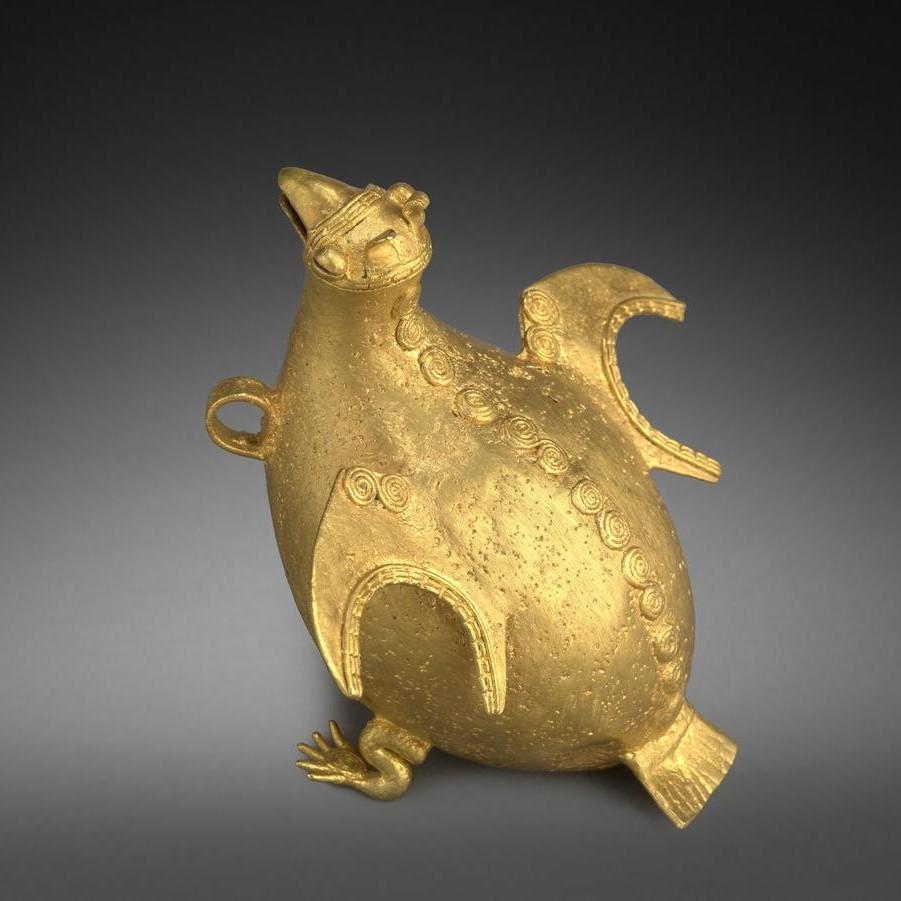
Seated man
Olmec culture, southern Mexico, Guatemala or El Salvador, 1200-400 BC.
Brown stone, inv.no. MAS.IB.2010.017.016
The prominent nose and downward drawn corners of the mouth associated the Olmecs with the jaguar, and this statue is considered to be an image of a shaman half turned into a jaguar. He narrows his eyes to focus on a different, spiritual world.
Quail as a chest jewelery or rattle
Costa Rica or Panama, 700-1520.
Gold, inv.no. MAS.IB.2010.017.131
The quail is hollow and contains a stone that makes it rattle. The quail was carried on the chest and looked at its wearer. Another object in the MAS collection seems inspired by this, a so-called alberia, a Mexican fantasy animal in the traditional folk art (MAS.0319.0008).
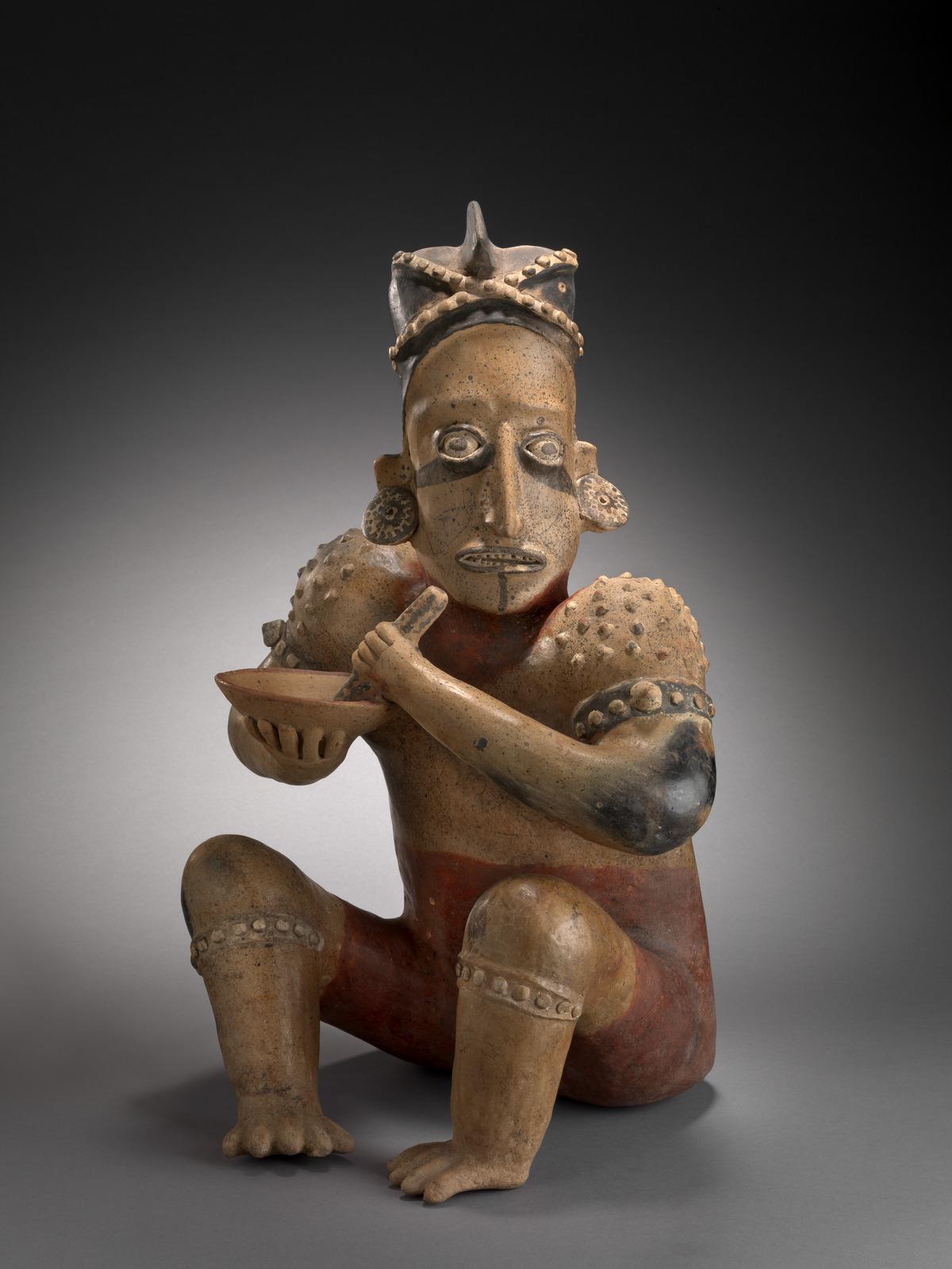

Man with pestle and bowl
Jalisco Culture, Western Mexico, 300 BC-300 AD.
Pottery, inv.no MAS.IB.2010.017.036
The man wears plugs in his ears, as you increasingly can see nowadays. The balls on his shoulders may represent a scar decoration. He also applied black paint under his eyes, on his chin and on his lips.
Warrior with two dogs
Veracruz Culture, Northern Gulf Coast, Mexico, 400-900.
Pottery, inv.no. MAS.IB.2010.017.054
This prisoner with his two dogs wears the headgear of the warrior order of the prairie wolf. Furthermore, he is only dressed in a loincloth and wears strange ear jewelry: his gold jewelry has been replaced by copies of rope. He waits for his beheading. Dogs played the role of escorts of the dead, a feature they also had in Ancient Egypt (think of the god Anubis accompanying the mummy to the Underworld).
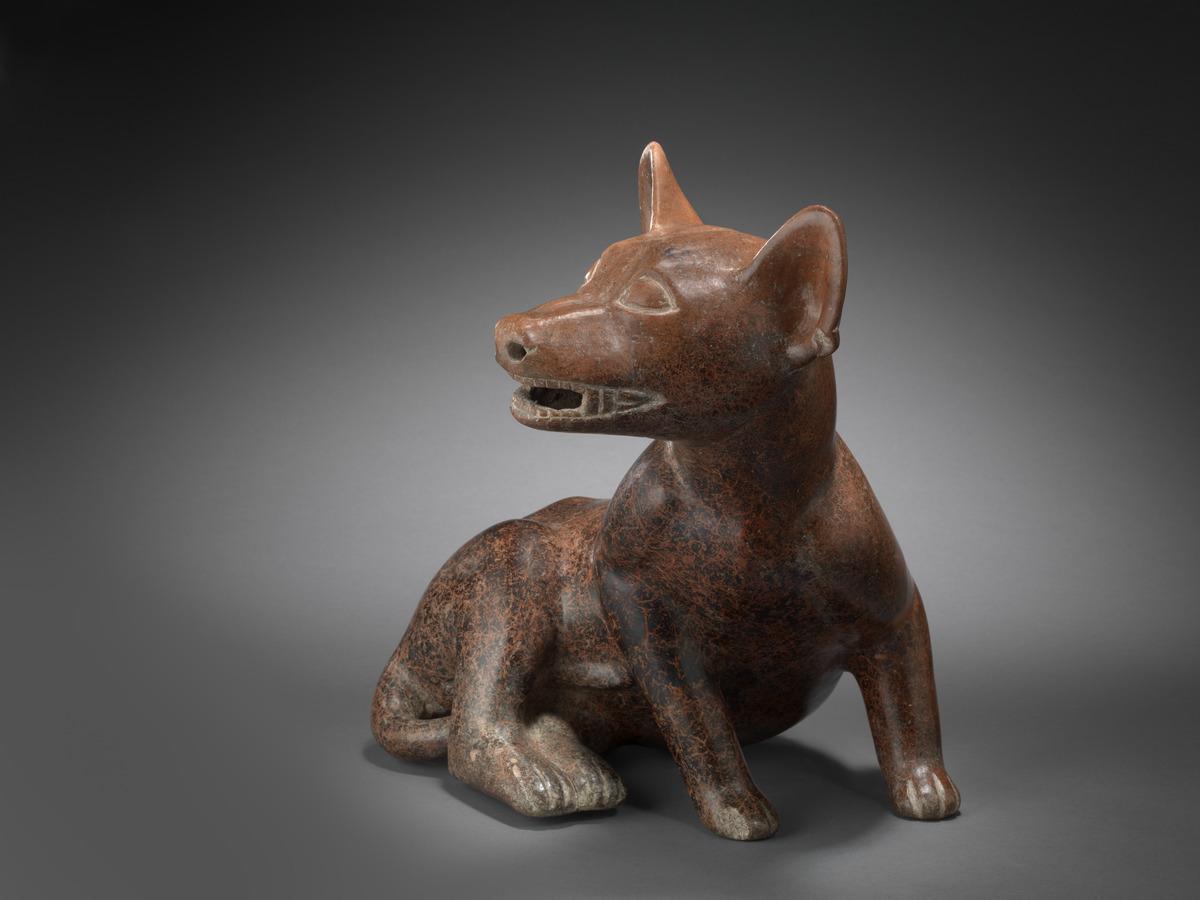
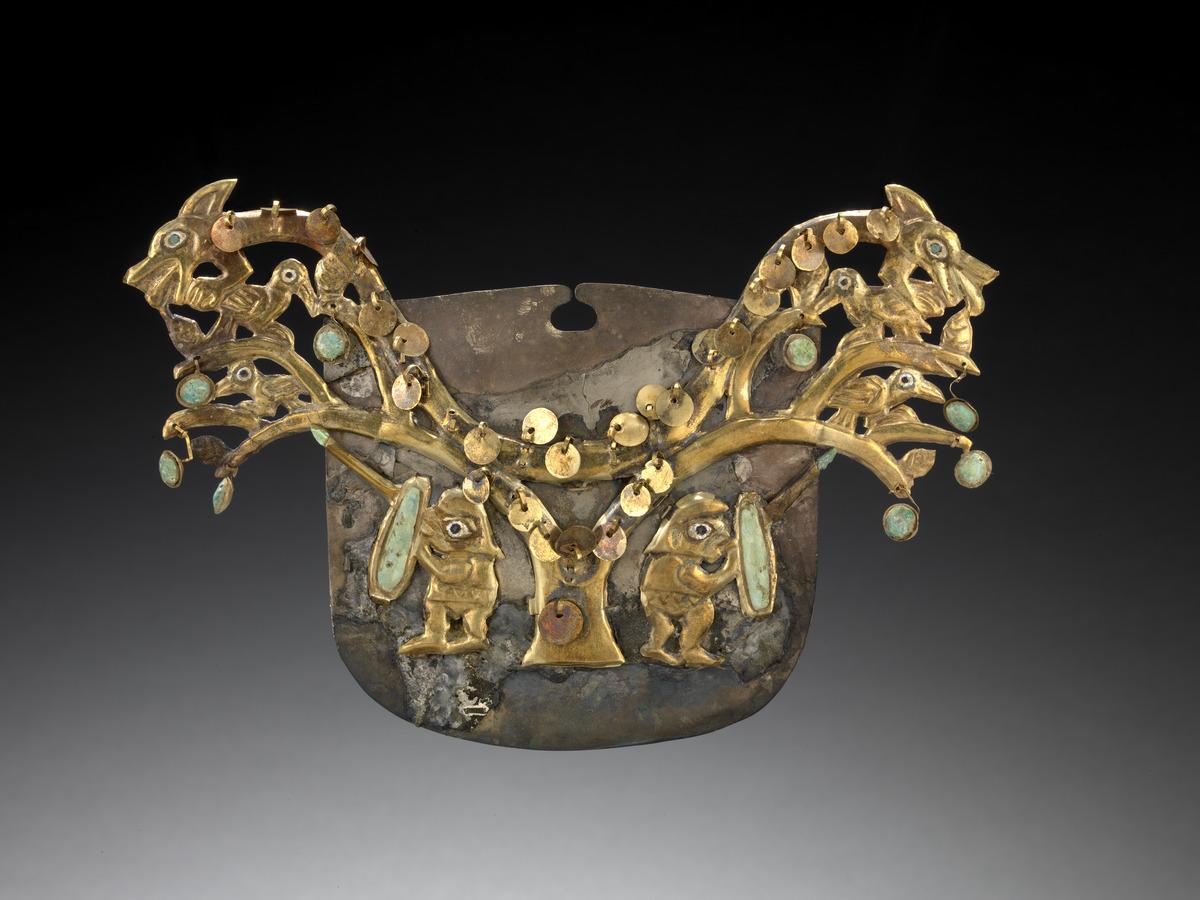
Figurine in the form of a dog
Colima Culture, Western Mexico, 300 BC-300 AD.
Pottery, inv.no. MAS.IB.2010.017.041
Dogs often acted as companions of the dead in pre-Columbian cultures. Statues and vases in the shape of dogs like this were placed in the tomb so that the deceased would have his faithful companion with him on his journey through the underworld. The dogs shown are Xoloitzcuintli or Mexican hairless dogs.
Nose jewelry with an image of a bird hunt
Moche culture, Peru North Coast, 100 BC-700 AD.
Gold, silver and turquoise, inv.no. MAS.IB.2010.017.290
The two hunters hunt the birds in the tree with their blowpipes from behind their shields. Their "hunting dogs" already climb the tree to catch the stunned birds.
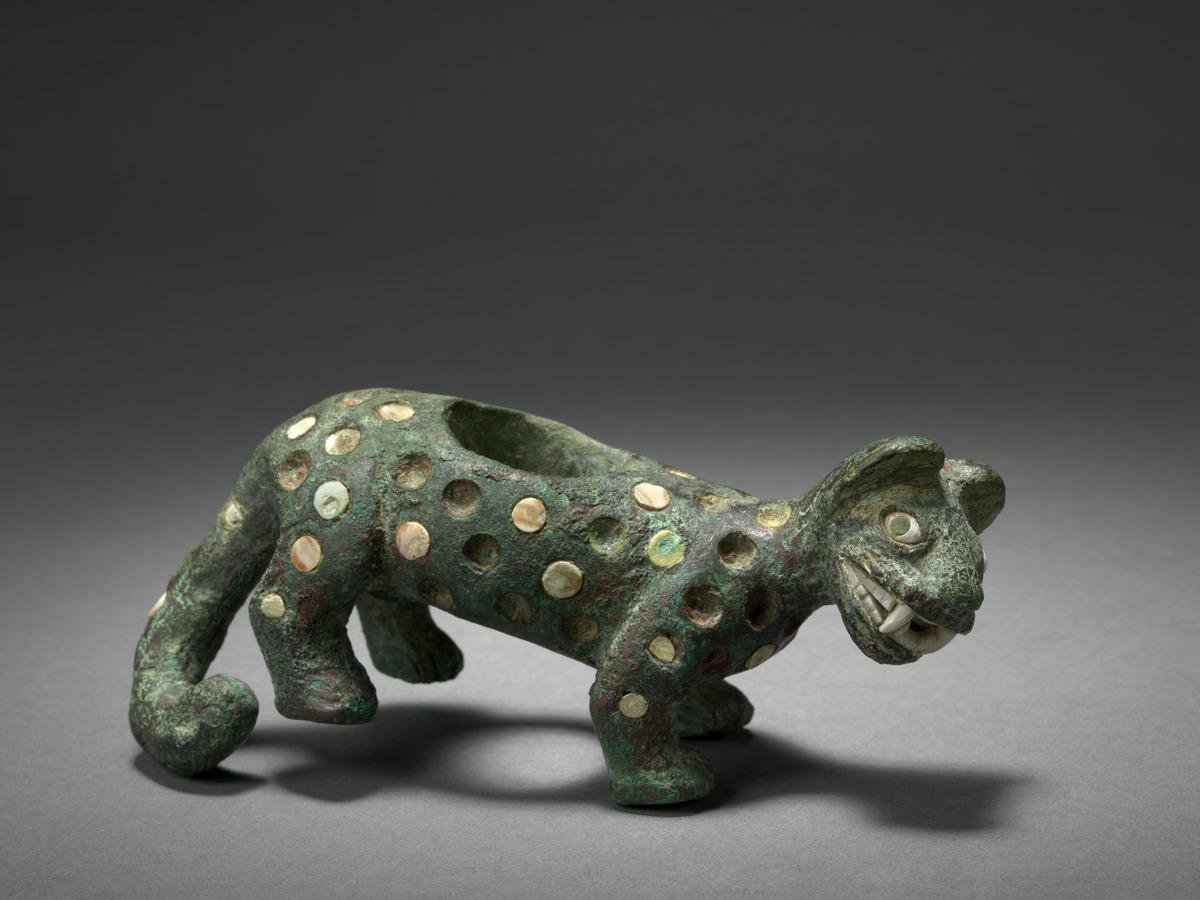
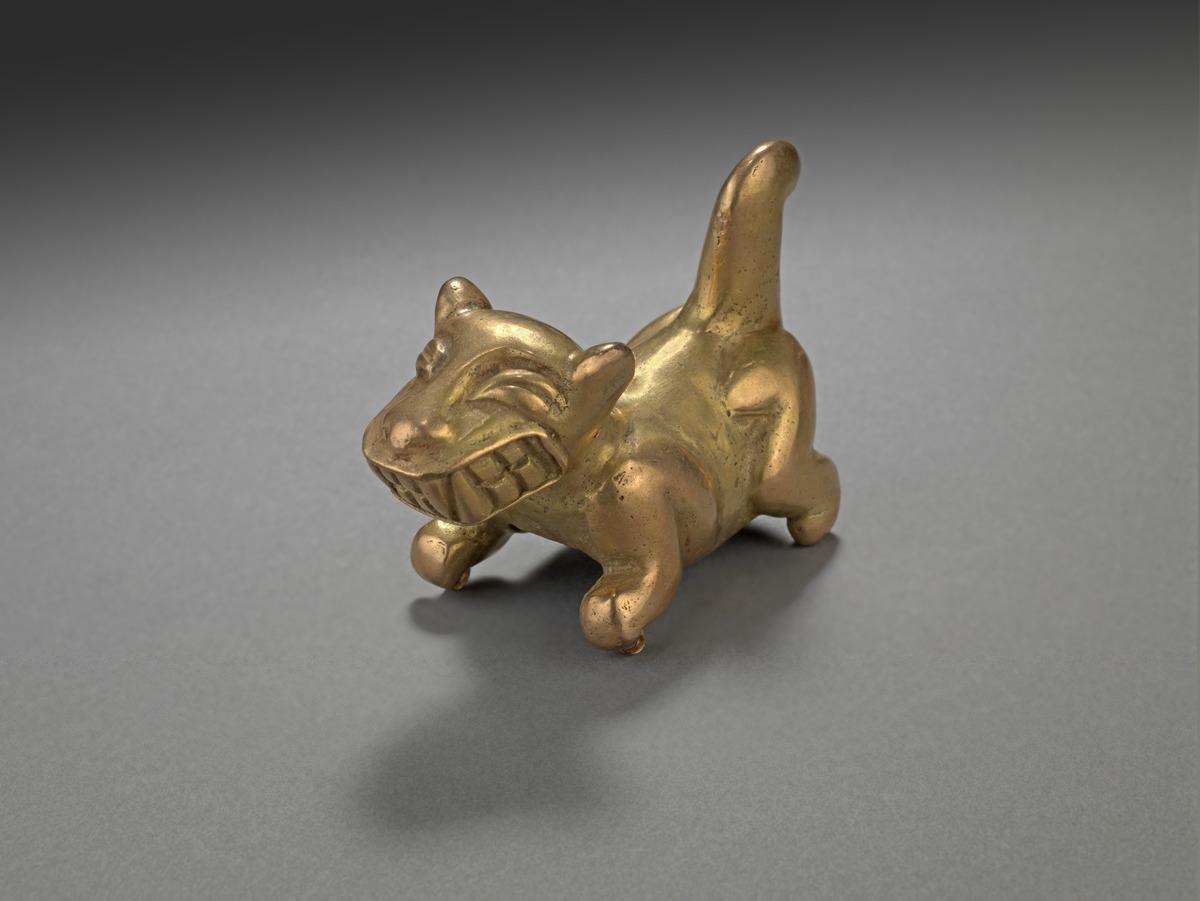
Jaguar
Moche culture, Peru, North Coast, 100 BC-700 AD.
Bronze and shell, inv.no. MAS.IB.2010.017.285
Jaguars play an important role in the mythology of many South American cultures. The shell is a common material near the Moche, who lived along the coast in the north of present-day Peru. Also, very well-known are portrait vases.
Pendant in the form of a feline
Gran Chiriqui, border area Costa Rica and Panama, 700-1520.
Gold (tumbaga), inv.no. MAS.IB.2010.017.122
All images:
Ministry of the Flemish Community, Collection Paul and Dora Janssen-Arts, MAS, Antwerp. © photo : Hugo Maertens, Brugge


